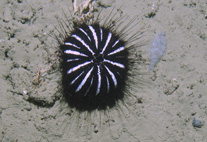Abstract
Scientific publications carry a practical moral duty: they must last. Along that line of thinking, some methods are proposed to allow economically and structurally viable publication of DNA sequence data of any size in printed matter and PDFs. The proposal is primarily aimed at contributing for preserving information for the future, while allowing authors to avoid information splitting and complement storage ex situ, that is, in server machines, outside the publication proper. The technique may also help to solve the impasse between the ICZN Code requirement that a new nomen be associated to diagnostic characters for the taxon vs. the phylogenetic definition of taxa, based on cladograms only: sequence data are characters, and can now be easily and comfortably included in taxonomic publications, with direct textual mention to their diagnostic sections. The compression level achieved allows the inclusion of all wanted DNA or RNA sequences in the same printed matter or PDF publications where the sequences are cited and discussed. Reduced font sizes, invisible fonts, and original 2D black & white and color barcodes are illustrated and briefly discussed. The level of data compression achieved can allow each full page of sequence data, or about 5000 characters, to be precisely coded into a color barcode as small as a square of 1.5 mm. A practical example is provided with Taeniogonalos woodorum Smith (Hymenoptera, Trigonalidae). Free software to generate publishable barcodes from txt or FASTA files is provided at www.systaxon.ufes.br/dna.
References
Anonymous [IUPAC-IUB Commission on Biochemical Nomenclature] (1970). Abbreviations and symbols for nucleic acids, polynucleotides, and their constituents. Biochemistry, 9, 4022–4027. http://dx.doi.org/10.1021/bi00822a023
Anonymous [International Commission on Zoological Nomenclature] (1999) International code of zoological nomenclature. Fourth edition. London. International Trust for zoological Nomenclature, I–XXIX + 1–306.
Anonymous [International Commission on Zoological Nomenclature] (2012) Amendment of Articles 8, 9, 10, 21 and 78 of the International Code of Zoological Nomenclature to expand and refine methods of publication. ZooKeys, 219, 1–10. http://dx.doi.org/10.3897/zookeys.219.3944
Carlos, C.J. & Voisin, J.-F. (2009) A few remarks on the proposed amendment of the International Code of Zoological Nomenclature to expand and refine methods of publication. Zootaxa, 2198, 67–68.
Dimitrova, D.V. & Bugeja, M. (2007) The half-life of internet references cited in communication journals. New Media & Society, 9 (5), 811–826. [http://nms.sagepub.com/content/9/5/811.short; accessed 20 October 2012].
Dubois, A. (1999) Miscellanea nomenclatorica batrachologica, 19. Notes on the nomenclature of Ranidae and related groups. Alytes, 17 (1–2), 81–100.
Dubois, A. (2003) Editorial. Should internet sites be mentioned in the bibliographies of scientific publications? Alytes, 21 (1–2), 1–2.
Dubois, A. (2006) Naming taxa from cladograms: a cautionary tale. Molecular Phylogenetics & Evolution, 42, 317–330.
Dubois, A. (2007) Naming taxa from cladograms: some confusions, misleading statements, and necessary clarifications. Cladistics, 23, 390–402.
Dubois, A. (2010) Contributions to the discussion on electronic publication IV. Registration as a fourth floor of the nomenclatural process. Bulletin of zoological Nomenclature, 67 (1), 11–23.
Dubois, A. (2011) The International Code of Zoological Nomenclature must be drastically improved before it is too late. Bionomina, 2, 1–104.
Dubois, A., Ohler, A. & Biju, S. D. (2001) A new genus and species of Ranidae (Amphibia, Anura) from south-western India. Alytes, 19 (2–4), 53–79.
Dubois, A. & Raffaëlli, J. (2012) A new ergotaxonomy of the order Urodela Duméril, 1805 (Amphibia, Batrachia). Alytes, 28 (3–4), 77–161.
Löbl, I. (2009) Contributions to the discussion on electronic publication III. Bulletin of zoological Nomenclature, 66 (4), 307–308.
Michel, E., Nikolaeva, S., Dale-Skey, N. & Tracey, S. (ed.) (2010) Contributions to the discussion on electronic publication IV. Bulletin of zoological Nomenclature, 67 (1), 4–23.
Nathans, J. (1999) The evolution and physiology of human color vision: insights from molecular genetic studies of visual pigments. Neuron, 24, 299–312.
Ohler, A. & Dubois, A. (2012) Validation of two familial nomina nuda of Amphibia Anura. Alytes, 28 (3–4), 162–167.
Rowe, M.H. (2002) Trichromatic color vision in primates. News in physiological Sciences, 17 (3), 93–98.
Smith, D.R., Janzen, D.H., Hallwachs, W. & Smith, M.A. (2012) Hyperparasitoid wasps (Hymenoptera, Trigonalidae) reared from dry forest and rain forest caterpillars of Area de Conservación Guanacaste, Costa Rica. Journal of Hymenoptera Research, 29, 119–144. http://dx.doi.org/10.3897/JHR.29.3233
Welter-Schultes, F., Eikel, O., Feuerstein, V., Hörnschemeyer, T., Klug, R., Lutze, A., Tröster, G., Wieland, F., Willmann, R., Antezana Jerez, T., Baiocchi, D., Caldara, R., Núñez Cortés, C., Fenzan, W.J., Fery, H., Filmer, M., Gittenberger, E., Giusti, F., Horro González, J., Groh, K., Guerra, A., Hendrich, L., Jäch, M., Janssen, R., Jimenez Tenorio, M., Johanson, K.A., Kanase, Aruna A., Kenner, R.D., Koch, A., Lindner, N., Lorenz, F., Maehr, M.D., Manganelli, G., Martínez, S., Meregalli, M., Monteiro, A., Nielsen, S.N., de Oliveira, Á., Pearce, T.A., Pederzani, F., Petrov, P.N., Pola Perez, M., Poppe, G.T., Richling, I., Rolán, E., Sahlmann, B., Sama, G., Savage, J.M., Smetana, A., Stuardo, J., Sturm, C., Suárez Bustabad, M., Subai, P., Szekeres, M., Trigo, J.E., Tucker, J.K., van Vondel, B.J., Watts, C., Wiese, V. & von Wirth, V. (2009) Comment on the proposed amendment of articles of the International Code of Zoological Nomenclature to expand and refine methods of publication. Bulletin of zoological Nomenclature, 66 (3), 215–219.

